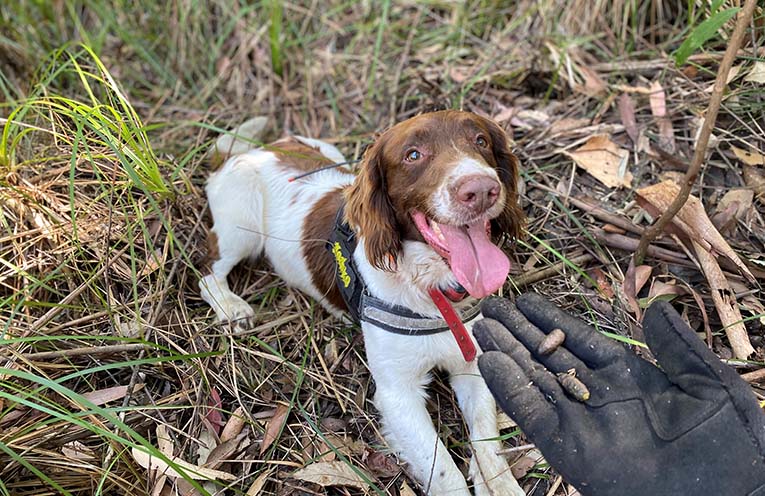
THE Jaliigirr Biodiversity Alliance is currently funded by the Australian Government for a range of conservation actions occurring for koalas over the next eighteen months.
It works in partnership with public and private land managers, government agencies, traditional custodians and local community groups to undertake actions to assist with long term conservation outcomes for koalas in the Coffs Harbour and Bellingen areas of Regional Koala Significance.
Funded strategies include training for koala carers and the purchasing of rescue equipment, weed removal in koala habitat, the reconstruction of new koala habitat through revegetation and the collection and genetic analysis of koala scat material.
Speaking about this last, and uncommon, strategy, Jaliigirr project manager Justin Couper said, “Over the past few months, local Bellingen business Canines for Wildlife and their koala scent detection dog, Max, have targeted prime koala habitat in the Nambucca, Bellingen and Coffs Harbour LGA searching for fresh koala scat material for genetic testing.”
Mr Couper said fresh koala scat material can be used to identify the DNA profile and gender of individual koalas within a sub-population, the comparative genetic diversity of sub-populations, identify whether there is movement of genes between populations, and the presence of Chlamydia in individuals and sub-populations.
The Canines for Wildlife team will survey 30 locations with five one-hectare transects surveyed at each location resulting in 150 hectares surveyed for koala scat material across the project area.
Mr Couper said, to date, 31 separate fresh samples suitable for genetic analysis have been found during the detection dog surveys at locations near Brierfield, North Bellingen, Valery, Repton, Raleigh, Fernbrook, Lowanna, Dorrigo and Woolgoolga.
“The Australian Government grant funding for this project has come at a critical time,” he said.
“With the establishment of a Great Koala National Park in our region it’s imperative we develop a robust understanding across all land tenures of the locations, health and genetic diversity of the largest known population of wild koalas in the country.”
Mr Couper said, although koalas face many threatening processes, chlamydia has been identified as the number one cause for koala hospital admissions or death and a critical threat that, if adequately addressed, could reverse population decline.
The information from the surveys and genetic analysis would better inform public and private land managers in koala habitat management, including priorities for koala food tree planting programs to promote existing and new linkages to enhance koala genetic diversity, health and resilience.
By Andrew VIVIAN
